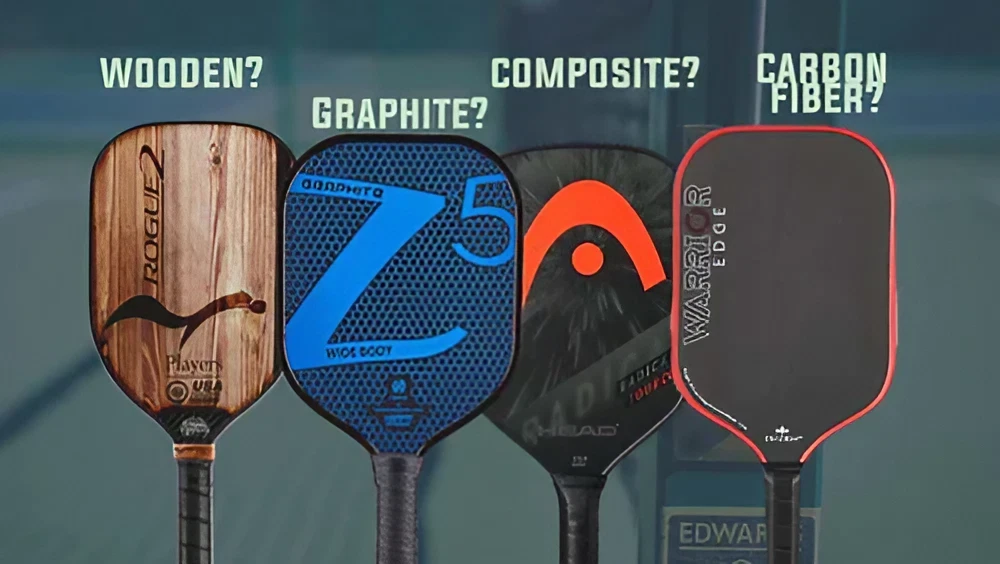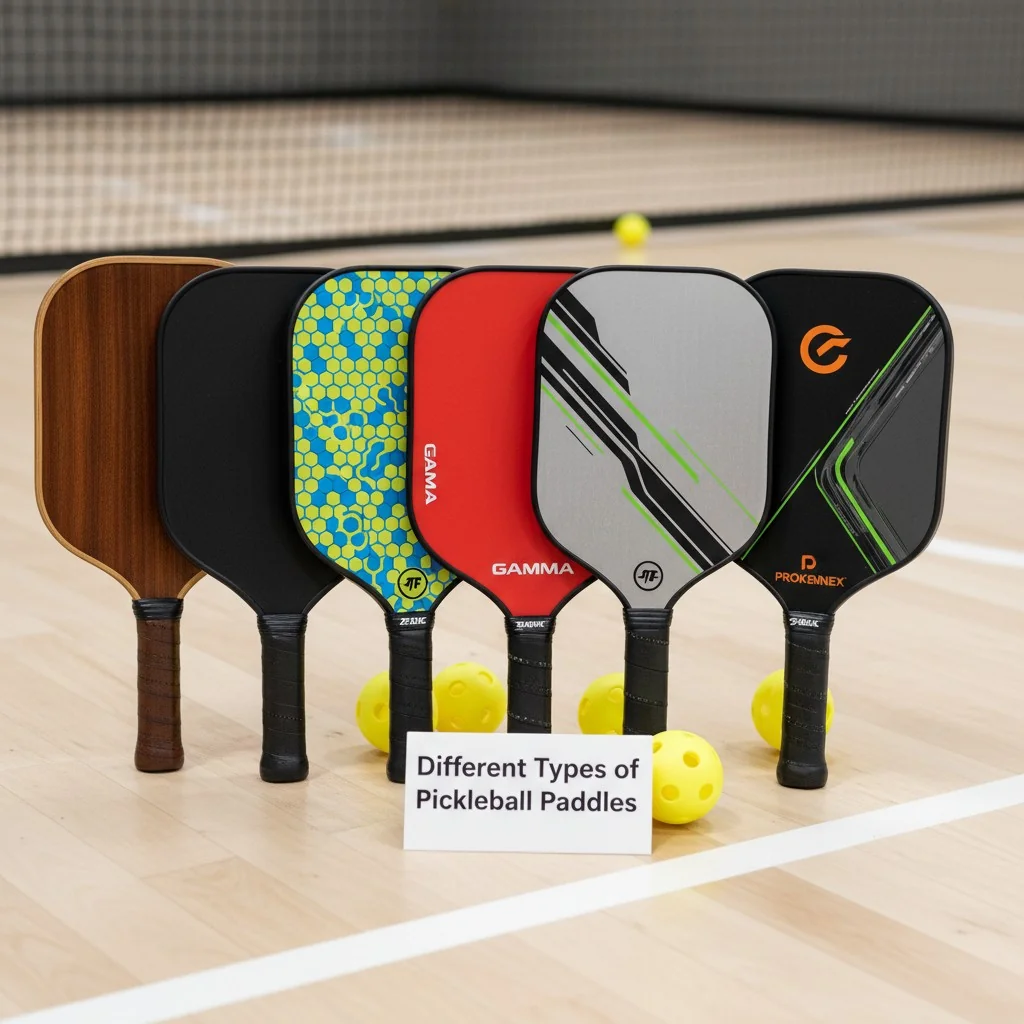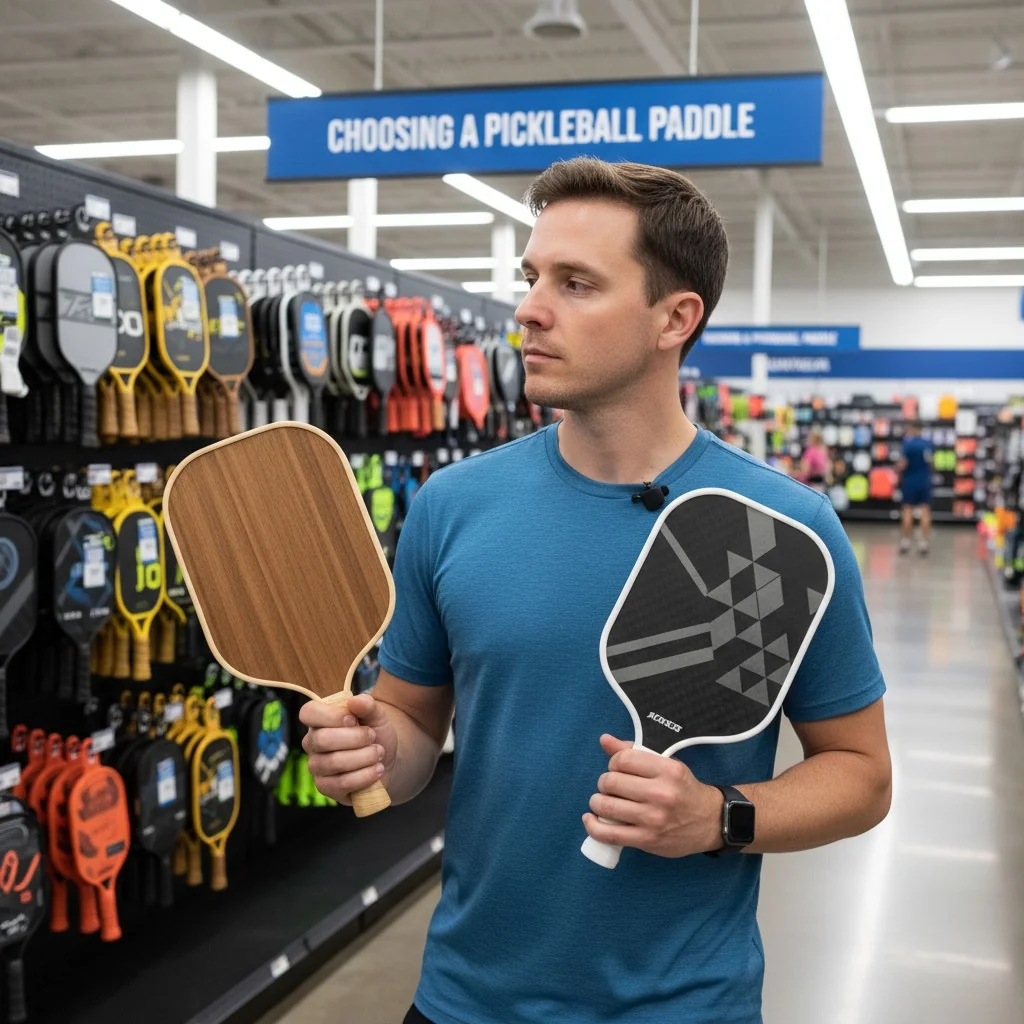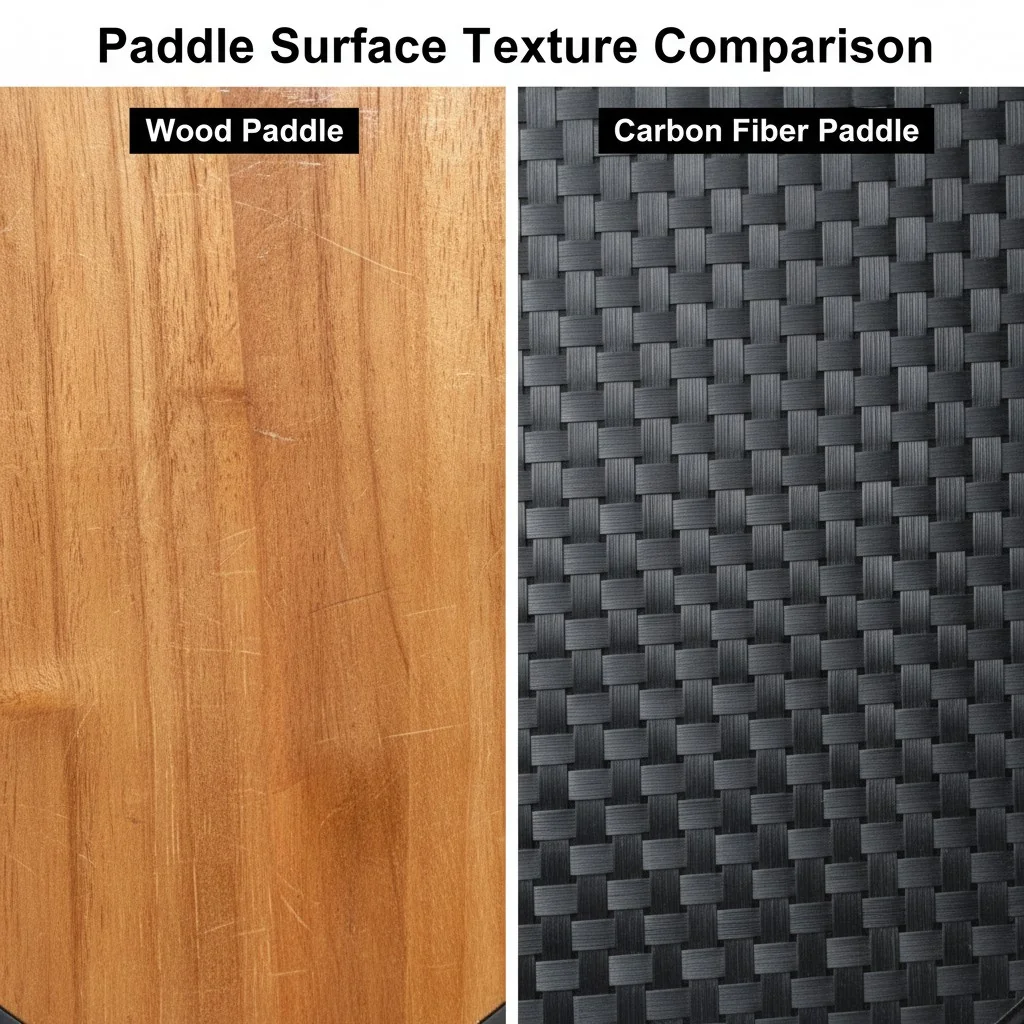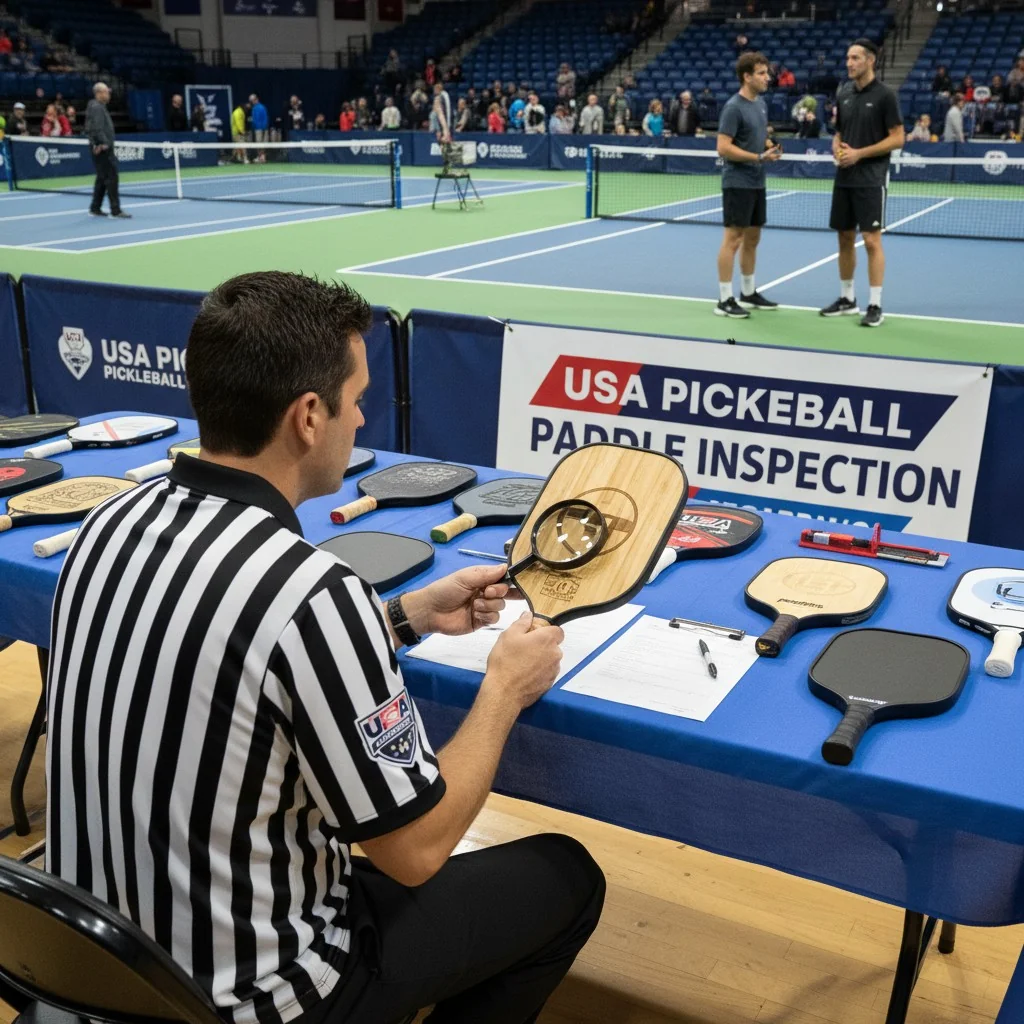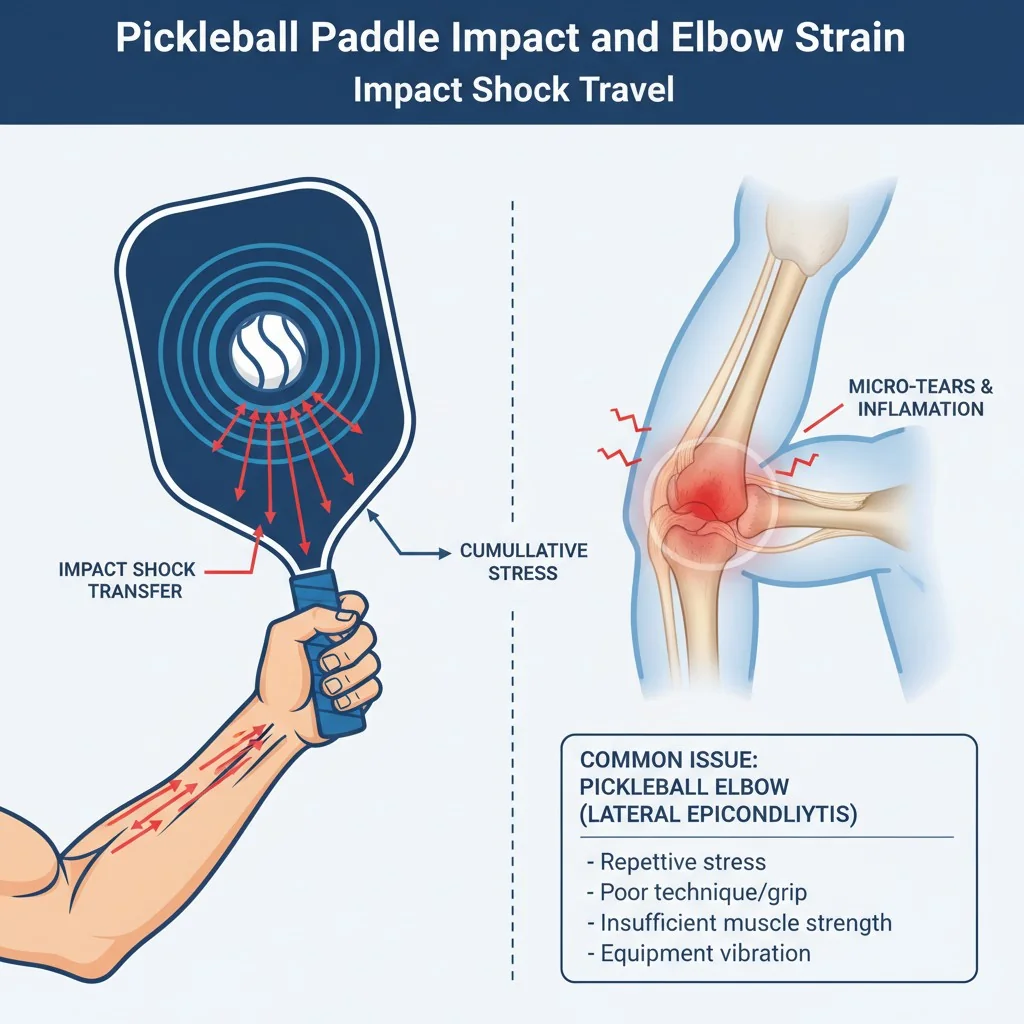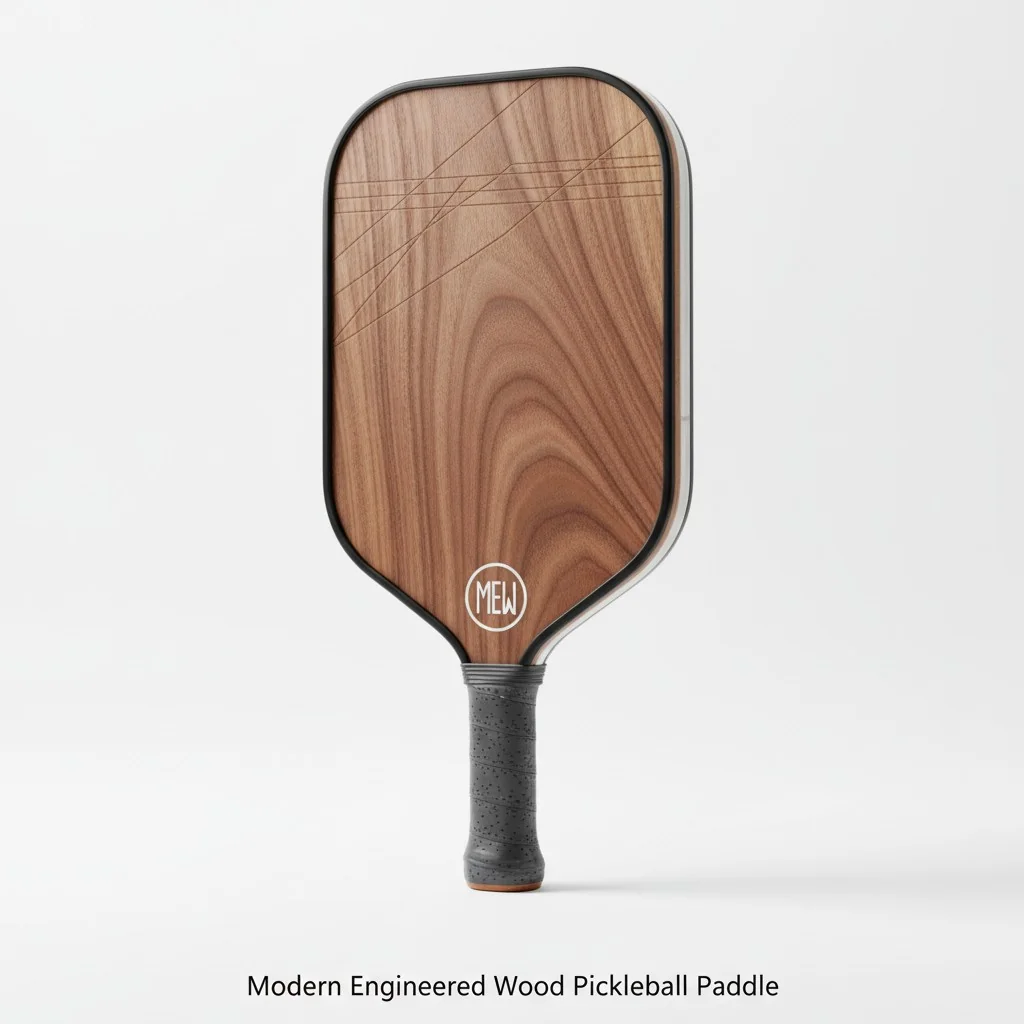Choosing your first pickleball paddle feels overwhelming. You see cheap wooden sets everywhere, but you hear pros talking about carbon fiber. Making the wrong choice can slow your progress and waste money.
Wooden paddles are legal and very budget-friendly1. But for most players, they are too heavy, less consistent, and harder to control than modern composite or carbon paddles. They are best for PE classes, loaner gear, or a simple backyard set.
But the story isn’t that simple. As someone who started on the factory floor and now helps brands design their own paddle lines, I can tell you that "wood" isn’t just one thing. The technology is changing. To build a successful paddle business or just to choose the right gear, you need to understand the details. Let’s break down who should use wood, what the specs really mean, and where the future of this classic material is headed.
All wooden pickleball paddles weigh over 10 ounces.False
While classic wood paddles average 10 oz, new engineered wood paddles can weigh as little as 8.1 oz, similar to modern composite paddles.
Wooden pickleball paddles are legal for use in USA Pickleball sanctioned tournaments.True
USA Pickleball rules allow any rigid, non-compressible material, including wood, as long as the paddle meets all other size and surface texture requirements.
Who Should (and Shouldn’t) Buy a Wooden Paddle?
You want to buy paddles for a school, a rec center, or just for fun in the backyard. But choosing the wrong type can lead to frustrated players and wasted money.
Wooden paddles are a great fit for PE programs, loaner fleets, and absolute budget kits where durability2 and price matter more than performance. They are not ideal for players who want to improve their skills quickly, as modern paddles offer better control and less fatigue.
When I work with clients who supply paddles to schools or community centers, the conversation is always about two things: cost and durability. This is where classic wood paddles shine.
The Case for Wood: Bulk and Budget
For high-volume environments, a simple, heavy wood paddle is almost indestructible. It can be dropped, scraped, and left outside, and it will still be playable. From a business perspective, if you are outfitting a program with 50 paddles, the low cost of wood is a massive advantage. The performance gap doesn’t matter as much when the goal is simply to introduce people to the game.
The Case Against Wood: Player Development
However, for a brand focused on the individual player, I usually advise against leading with a classic wood paddle. This can be a "false economy." A beginner will progress much faster on a midweight composite paddle because it has a larger sweet spot3 and is less tiring on the arm. They feel more successful, stay with the sport longer, and become a loyal customer. A player who starts on a heavy wood paddle often gets frustrated and quits, or they upgrade within weeks, and you might lose them to another brand.
Beginners learn faster with heavier wooden paddles because they provide more power.False
Beginners typically learn faster with midweight composite paddles because their larger sweet spots and lower weight offer better control and less arm fatigue, which are more crucial for skill development than raw power.
Wooden paddles are the most common choice for school physical education programs.True
Due to their low cost and high durability, wooden paddles are the preferred option for many schools and recreational centers that need to purchase equipment in bulk.
Wood vs. Carbon: Which Helps You Learn Faster?
You see paddles made of wood, composite, and carbon fiber. The technical terms can be confusing, and it’s hard to know what really makes a difference on the court.
Modern composite and carbon fiber paddles help you learn faster. Their lighter weight, larger sweet spots, and textured surfaces give you more control and consistency, which are key for developing good habits and enjoying the game.
In the factory, we see how a paddle’s construction directly impacts its performance. The differences between a solid piece of wood and a multi-layer composite paddle are huge. Let’s look at what changes on the court.
Weight and Control
A classic wooden paddle, like the Diller models many of us have seen, weighs around 10 ounces. In contrast, most modern paddles are in the "midweight" class of 7.3 to 8.2 ounces. This difference is massive. A lighter paddle is easier to swing, allowing for faster reactions at the net and less arm fatigue over a long match. For a beginner, this means they can sustain rallies longer and develop the muscle memory for dinks and drops without feeling weighed down.
Surface and Spin
The face of the paddle is just as important. A typical wood paddle has a smooth, painted surface. Modern paddles use textured composite or carbon fiber faces. This texture grips the ball, making it much easier to generate spin. More spin gives a player more control, allowing them to hit aggressive shots that still drop into the court. The polymer honeycomb core inside these paddles also creates a more consistent rebound across the entire face, making the "sweet spot" feel much larger and more forgiving than on a solid wood paddle.
Carbon fiber paddle surfaces can generate more spin than smooth wooden surfaces.True
The textured nature of carbon fiber and composite faces provides more friction to grip the ball, enabling players to impart significantly more spin compared to a standard smooth wood paddle.
All modern pickleball paddles use a polymer honeycomb core.False
While polymer honeycomb is the most common core material, other materials like aluminum, Nomex, and even engineered hollow-core wood are also used in modern paddle construction.
Are Wooden Paddles Legal for League or Tournaments?
You’re thinking about using a wooden paddle, maybe for nostalgic reasons or because of the cost. But you don’t want to show up to a tournament only to be told your gear is illegal.
Yes, wooden paddles are perfectly legal for tournaments. USA Pickleball rules4 permit any rigid, non-compressible material, including wood, as long as the paddle meets size, surface, and reflection standards. There is no weight limit.
For any brand I consult with, ensuring USA Pickleball approval is step one. It’s a critical part of market access, especially if you want to sell to serious players. Let’s clarify what the rules mean for wood.
The Rulebook on Materials
The official USA Pickleball Equipment Standards Manual is clear: the paddle material must be rigid and non-compressible. Wood fits this description perfectly. The rules do not favor one material over another, whether it’s wood, carbon fiber, or fiberglass. The focus is on performance characteristics5, not what it’s made of. There are strict limits on surface roughness and texture to prevent excessive spin, but a standard wood paddle easily falls within these limits.
The Approved Paddle List
The most important thing for a tournament player—and for a brand selling to them—is the USA Pickleball Approved Paddle List. While the material itself is legal, every specific paddle model must be submitted, tested, and approved to be used in a sanctioned event. Many classic wood paddles are on this list. However, if you are a brand creating a new wood paddle, you must go through the official approval process before marketing it as "tournament legal."
USA Pickleball has banned all wooden paddles from professional tournaments.False
Wooden paddles are not banned. As long as a specific model passes the official testing and is listed on the USA Pickleball Approved Paddle List, it is legal for all levels of play.
There is a maximum weight limit for pickleball paddles in official rules.False
The USA Pickleball rulebook specifies maximum length and width, but it does not impose any maximum or minimum weight limit on paddles.
Elbow-Friendly Paddles: Does Paddle Weight or Material Affect Pain?
You’ve heard that pickleball can be hard on your arm, leading to "tennis elbow." You’re worried that choosing the wrong paddle, especially a heavy wooden one, might increase your risk of injury.
No single paddle causes injury, but heavy paddles with small sweet spots can increase shock and strain on your arm. Experts recommend lighter, balanced paddles with vibration-dampening features to help reduce the risk of elbow discomfort.
When we design paddles for clients who want to market an "elbow-friendly6" model, we focus on three key engineering principles. It’s not just marketing; it’s about physics and material science.
The Role of Weight and Balance
A heavy paddle, like a 10-ounce wood model, requires more force to swing. More importantly, it has a higher "swing weight," which can put more strain on the tendons in your forearm. Off-center hits are the real enemy. When you miss the sweet spot, the paddle twists in your hand, sending a jarring shock up your arm. Heavier paddles can amplify this effect. A midweight paddle (7.3-8.2 oz) is often easier to control, leading to more centered hits and less twisting.
The Power of the Core
This is where modern materials make a huge difference. The polymer honeycomb core inside a composite or carbon fiber paddle is designed to absorb and disperse impact energy. Think of it as a built-in shock absorber. A solid piece of wood, by contrast, transfers much more of that raw vibration directly to your hand and arm. For players prone to elbow pain, a paddle with a thick polymer core is almost always a better choice.
Heavier paddles are always better for preventing tennis elbow because they absorb more shock.False
This is a common misconception. While a heavy paddle has more mass, its high swing weight can increase strain. Experts often recommend lighter or midweight paddles with good vibration damping to reduce arm fatigue and shock from mishits.
Paddles with polymer honeycomb cores are generally better at dampening vibration than solid wood paddles.True
The cellular structure of a polymer core is specifically designed to deform and absorb impact energy, reducing the amount of vibration that travels to the player's arm.
The New ‘Wood’: When Does a Wooden Paddle Actually Make Sense?
You’ve probably decided that a classic, heavy wood paddle isn’t for you. But you might be overlooking a new and innovative niche where wood is making a surprising comeback.
A wooden paddle makes sense in two key scenarios: for budget-focused bulk purchases where durability is key, or for players and brands interested in new, engineered wood7 designs that offer modern performance with a unique aesthetic.
While the old-school gym class paddle has its place, the most exciting developments I’m seeing in the industry are in engineered wood. This isn’t your grandfather’s paddle.
The Nostalgic and Budget-Friendly Choice
First, let’s acknowledge the primary use case. As mentioned, rec centers, schools, and casual backyard players are the perfect market for classic wood paddles. They are cheap, they last forever, and they get the job done for introducing the sport. For a business, this is a reliable, high-volume, low-margin category.
The New Wave: Engineered Wood
The more interesting story is the emergence of high-performance wood paddles. I’ve been watching companies like Bigwood Sporting Goods with great interest. They are using manufacturing techniques borrowed from other industries to create paddles with hollow wood cores and premium walnut faces. This construction allows them to hit modern midweight targets of around 8.1-8.3 ounces. These paddles offer the feel and aesthetic of wood but play much more like a modern composite paddle. For a lifestyle brand like Recess Pickleball, founded by designers, this kind of material innovation is a powerful way to stand out. It creates a story around craftsmanship and sustainability while still delivering the performance today’s players expect.
Modern engineered wood paddles can weigh the same as composite paddles.True
By using hollow-core construction and lightweight woods, manufacturers like Bigwood have created wood paddles in the 8.1-8.3 oz range, which is firmly in the modern midweight class.
All wood paddles have a small sweet spot.False
While classic solid wood paddles have smaller, less forgiving sweet spots, new engineered wood paddles with thicker, hollow cores can offer a much larger and more consistent playing surface, similar to composite paddles.
Spec Check: What Do the Numbers Mean for Your Business?
You need to compare paddle types quickly to make a smart inventory or design decision. Sifting through all the marketing language from different brands is time-consuming and confusing.
This simple table breaks down the key differences in weight, cost, and performance between classic wood, engineered wood, and modern composite paddles8. Use it to make a faster, smarter choice for your brand or store.
As a manufacturer and consultant, I use data like this every day to help my clients define their product lines. A successful brand rarely sells just one type of paddle. They build a range of options that cater to different players and price points. You can use this matrix to map out your own strategy.
For example, you can see a clear path for a three-tiered product offering:
- Good: Classic Wood for the entry-level, bulk, or institutional market.
- Better: Composite/Fiberglass for the mainstream beginner-to-intermediate player. This is usually the bestseller.
- Best: Carbon Fiber or Engineered Wood for the premium, performance-focused, or design-conscious customer.
Benchmark Data: Paddle Type Comparison
| Feature | Classic Wood | Engineered Wood | Composite / Carbon Fiber |
|---|---|---|---|
| Typical Weight | 9.5 – 11.0 oz | 8.0 – 8.5 oz | 7.3 – 8.4 oz (Midweight) |
| Typical Cost (to consumer) | $10 – $25 | $90 – $150 | $50 – $250+ |
| Core Material | Solid Plywood | Hollow-Core Wood | Polymer Honeycomb |
| Face Material | Painted Wood | Walnut, Basswood | Fiberglass, Carbon Fiber |
| Pros | Ultra-durable, lowest cost | Unique feel, aesthetic, modern weight | Large sweet spot, control, spin, low fatigue |
| Cons | Heavy, small sweet spot, high vibration | Niche market, higher cost than some composites | Less durable than wood, higher cost |
This table isn’t just for players; it’s a business plan. It shows you where the gaps in the market are and how you can position your products to meet specific customer needs, from the school gym to the tournament court.
The average cost of a classic wooden pickleball paddle is over $50.False
Classic wooden paddles are the most budget-friendly option, typically retailing for between $10 and $25.
Polymer honeycomb is the core material used in most mid-range to high-end paddles.True
Due to its excellent balance of power, control, and vibration damping, polymer honeycomb has become the industry standard for the vast majority of modern pickleball paddles.
Conclusion
Wooden paddles have a place, but for most players and brands, modern composite materials offer better performance and value. The right choice depends entirely on your specific goals and target customer.
References
-
Explore how budget-friendly paddles can provide value without sacrificing quality, especially for beginners. ↩
-
Understanding paddle durability can help you choose equipment that lasts longer and withstands wear and tear. ↩
-
Understanding the sweet spot can significantly improve your game and paddle selection. ↩
-
Familiarize yourself with the regulations to ensure your paddle is tournament-legal. ↩
-
Explore the features that define paddle performance and how they affect gameplay. ↩
-
Find out how paddle design can reduce the risk of injury and enhance comfort during play. ↩
-
Discover the innovative features of engineered wood paddles that enhance performance and aesthetics. ↩
-
Learn why composite paddles are often preferred for their balance of weight and control. ↩


